- Best Price! Direct China Factory!
- Send Inquiry
WhatsApp/WeChat: 0086-137-36454395
Heavy duty casters are used to impart mobility to hefty items, and they can easily maneuver through most kinds of terrains with these heavy loads. Heavy duty casters can be extremely useful for a wide variety of applications that a standard caster would not be able to manage because they are designed to withstand very high loads. Because their uses are so widespread, heavy duty casters are also used in quite a few industries as well.
Application
Heavy duty casters are used in situations where high strength and endurance are required to mobility heavy objects. Since heavy duty casters should be used for a wide variety of applications, they are often combined with different materials and often incorporated with different styles. Here are some common applications of Heavy Duty Casters:
High Impact Loads
In many warehouses and facilities, heavy loads are often dropped on a trolley from a certain height so they can be transferred to another location. Heavy duty trolley wheels prevent the trolley from breaking under the impact. Instead, the load is absorbed by the caster wheels, making it easy to transport the materials to another place.
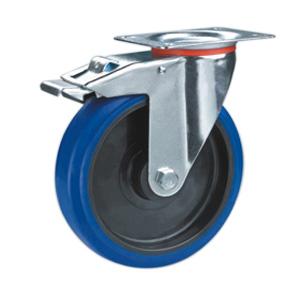
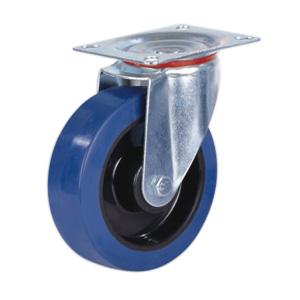
High-Temperature Environments
Many heavy duty casters make use of cast iron, aluminum, and nylon cores which can help them endure high-temperature environments with relative ease.
Rough Terrain
Most heavy duty casters also have shock-absorbing qualities. Not only does this feature help them withstand high impact loads, but it also helps the cart roll in areas with rough terrains, such as floors that are prone to damage or concrete roads.
Rigid Or Swivel
Heavy duty casters can also be rigid or swivel. Rigid heavy duty casters can only roll forwards or backward and cannot change direction on their own. Swivel casters can be maneuvered easily since they can rotate in any direction at a 360-degree angle. While applications for rigid casters are fairly limited and confined to a small space, swivel casters are more versatile and are perfect heavy duty wheels for carts and trolleys that have to go long distances.
Swiveling heavy duty casters are also often equipped with a braking or locking system, which keeps the cart locked in one place when you do not wish to move it. Additional mechanisms are also introduced in swiveling casters to improve their control and make it easy to use them.
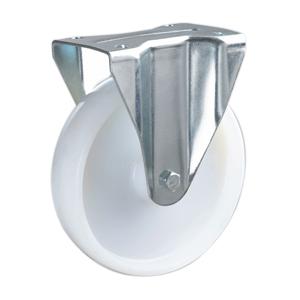
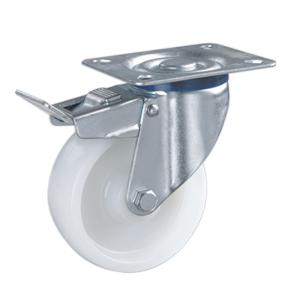
Motorized Casters
Many heavy duty casters are also motorized for the workers’ convenience. They are meant to move automatically with the help of a switch or controlling device to transport heavy goods from one place to another. One application of motorized casters is for the transfer of aircraft hangar doors from one place to another.
Industrial Uses Of Heavy Duty Casters
Heavy duty casters can be used in any industry where heavy loads need to be transported. Some of the industries that make use of these casters include the following:
Container Services
Heavy duty trolley wheels are also used on containers. Containers carry thousands of pounds of goods when they are fully loaded, and they need to move with extra precision with the help of high-strength casters. Container casters also often come with brakes and locking mechanisms to prevent unnecessary movement.
Aerospace Industry
Heavy duty casters are used in the process of manufacturing aircraft since the pieces that need to be moved around are very heavy and delicate at the same time. Therefore, they need to be transported without any fear of being damaged. These casters are used on engine stands, on tow bars, and even hangar doors. One application of rigid, heavy-duty casters is for aircraft hangar doors since the movement is only in a single direction, but the weight of the door is quite large.
Heavy duty casters are also used on carts that transport helicopters off the Helipad after it has landed. The heavy-duty caster ensures high stability in these applications.
Towing Industry
The towline industry also used heavy duty casters for their daily applications. The casters required by the towline industry should be able to withstand high speeds and the heat generated due to the friction and chafing. The casters used for towing can be made of metals and heavy-duty plastics. Most of these casters are also kingpinless. The kingpinless heavy-duty casters can be rigid, swiveling, or have a directional lock that can lock their movement in a single direction.
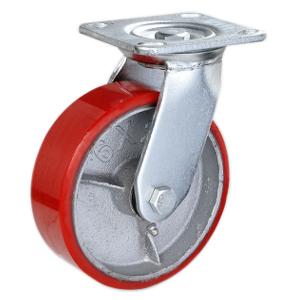
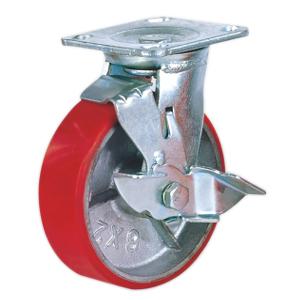
Automotive Industry
Since the materials used in the automotive industry are also quite heavy, they need to use heavy-duty casters for movement as well.
Pros And Cons Of Heavy Duty Casters
It is important to know why heavy-duty casters are both excellent for use and difficult to manage.
Pros
There are many good qualities that are attributed to heavy duty casters. Here are some of the reasons why people choose them:
● They can transport thousands of pounds of goods with ease
● The wheels are versatile and come in many different styles and materials
● They have shock absorbing qualities, which help in protecting the cart and the load on top of it
● They can be used in a large number of industries for a variety of applications
Cons
You must be thinking that if heavy duty casters are so perfect, why does every industry not make use of them? Here are some reasons why all industries do not use heavy-duty casters:
● They are very slow. In industries where high speed is important, heavy-duty casters are quite redundant. The low speed helps protect the cargo, but it takes up a lot of precious time during transportation.
● Heavy-duty wheels are expensive. They are more expensive than most standard wheels and being used where they are not needed will only add an extra expense to the industry.
Final Thoughts
There are a wide variety of applications that can be attributed to heavy duty casters because they have high endurance and great versatility, and they should be used whenever their use seems like a necessity.

 English
English Spanish
Spanish German
German Russian
Russian Arabic
Arabic Portuguese
Portuguese Italian
Italian French
French Hebrew
Hebrew Turkish
Turkish